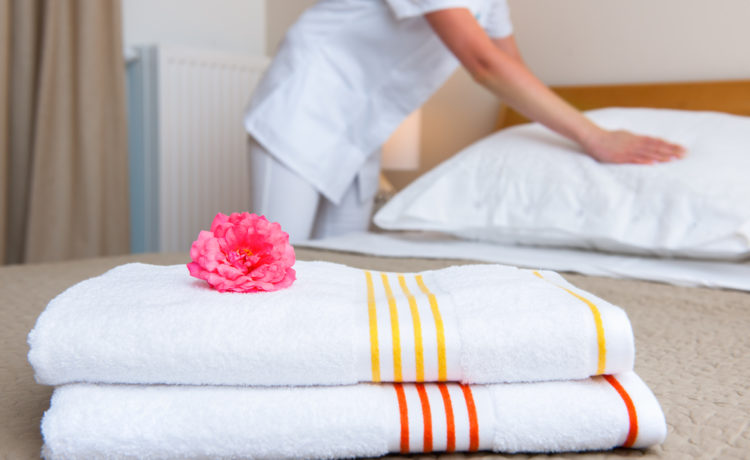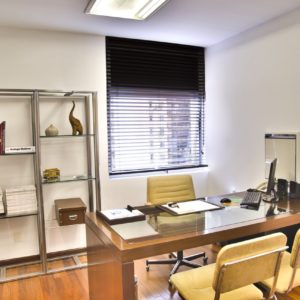From hotels and restaurants to catering companies, cafés, childcare centres, and hospitals, numerous businesses rely on fresh, clean linens on a year-round basis. But this inherent need tends to create some logistical and overhead concerns when deciding how to procure, clean, and maintain an adequate selection of towels, tablecloths, and bedspreads on an internal basis.
As such, today’s business owners are constantly weighing the pros and cons of establishing an in-house laundry department to account for serviettes, chef’s uniforms, waiter’s linens, and all of the other integral textiles required to provide a top-notch customer experience. In this regard, there is a widespread belief that instituting an onsite linens division is affordable and remunerative in the long run but, sadly, this notion couldn’t be further from the truth.
Take a brief moment to peruse the exorbitant expenses associated with establishing an On Property Laundry (OPL) operation:
- Water: Did you know that it takes more than eleven litres of water to clean half a kilogram of laundry? Were you aware of the fact that the average restaurant consumes over 15,000 litres of water on any given day? Water expenses account for a huge portion of OPL overhead, especially when taking into account the meagre recycling capabilities of today’s commercial laundry systems.
- Fuel: The gas and electricity used to power onsite laundry facilities aren’t metered separately, which makes it nearly impossible to regulate and monitor the energy and fuel expenses associated with an OPL.
- Maintenance and Repairs: Once the industrial-strength washers and dryers are installed, it’s usually very difficult to move, shift, or replace these massive pieces of equipment, especially if the facility features locking mechanisms and narrow walls. As a result, many business owners find themselves busting their budgets to contract specialised repairs and maintenance services when inevitable breakages arise throughout the year.
- Depreciation and Amortisation: As we all know, commercial OPL equipment is very expensive to purchase outright but the real headaches surface when it comes time to evaluate the depreciation and amortisation schedules. Thus, without a top-notch accountant by your side, your P&L statement will be skewed in terms of operating costs.
- Space: Regardless of the scope or nature of your business, committing a large portion of your commercial space to OPL equipment as opposed to value-added facilities and provisions is an exercise in futility if there ever was one. This is an intangible cost that is difficult to calculate and quantify but the steep prices of commercial real estate, particularly in metropolitan areas, creates an inequitable investment dynamic with regard to OPL operations.
- Capacity versus Cost: The ebb and flow of today’s hospitality and foodservice sectors creates uncertainty with regard to future projections and forthcoming market conditions but an OPL operation requires the same staffing regardless of capacity, which increases the per-load cost during slow periods and skews overhead costs unfavourably.
- Stock Replacement: Owning and maintaining an in-house assortment of linens opens you up to a host of control issues, namely with regard to stolen or “souvenir” linens that guests seem to feel entitled to and that’s without mentioning the normal replacements stemming from soiled, torn, discoloured, and overused provisions on a year-round basis.
- You Can’t Go Green: It is nearly impossible to obtain the necessary certifications for eco-friendly status when your business is constantly dumping huge amounts of water and chemicals into municipal sewer systems.
As you can see by now, establishing an OPL operation can be likened to running a second business within the confines of your current scope except for that fact that this second business does nothing but increase your overhead costs, stifle productivity, and limit your growth potential. Simply stated, an OPL operation serves as a massive drain on your bottom line.
As a result, it shouldn’t come as a huge surprise to find out that many businesses will outsource their laundry to a commercial service provider during the coming year. If you’d like to join in on the savings and contract a linen service for your own firm, the onus is on you to ensure that you’re partnering with a reputable company as opposed to an ineffectual, poorly-rated service.
With this notion in mind, feel free to use this brief article as a checklist of sorts to help separate the contenders from the pretenders during your research.
Step One: Look for Experience
Third-party laundry services are becoming increasingly prevalent and the entire market will be fully saturated before long, which is why it’s in your best interests to ensure that you’re partnering with a well-known, cutting-edge, resourceful firm:
- At least 40 years’ experience within the industry
- Extensive history of providing comprehensive laundry services to hotels, cafés, kitchens, restaurants, and other notable organisations throughout the UK
- Widespread network with at least ten in-house area service managers, five general managers, and several directors overseeing core processes
Step Two: Seek Out an Inclusive Suite of Services
Next, you’ll want to ensure that your laundry service of choice can provide a full-blown assortment of value-added services:
- Ample Selection of Linens: From chef’s jackets and trousers to waiter’s cloths, bed linens, luxury robes, fluffy towels, pristine napkins, elegant tablecloths, and a host of other immaculate textiles, your service provider should be able to provide an abundant collection of top-notch products.
- Comprehensive Delivery Service: The best-rated laundry services pride themselves on being able to facilitate on-demand deliveries throughout the UK’s most notable boroughs, ranging from Birmingham and Bristol to Cardiff, Edinburgh, Glasgow, London, and Manchester, just to name a few.
- Robust Ongoing Support: Apart from being able to procure a wide range of products and provide an inclusive delivery service, your laundry partner should also offer a dedicated customer liaison, industrial-strength washing facilities, and immediate stock replacements per request.
Step Three: Dive into the Details
Last but not least, you’ll want to ensure that your entire shortlist is comprised of firms that feature the following (often overlooked) traits and characteristics:
- No Long-Term Contracts or Lock-in Agreements:Your laundry service should simply provide a usage-based invoice once per month.
- Eco-Friendly Onus:There should be an emphasis on decreasing water waste, utility use, and washing temperatures.
- No-Obligation Quotes: Ideally, these should be available with an easily accessible online enquiry portal for quick responses.
- Past Customer Testimonials: These should be showcased directly on the firm’s home page to allow for a simpler assessment process.
There you have it: the ultimate beginner’s guide to choosing a renowned laundry service in today’s day and age!





